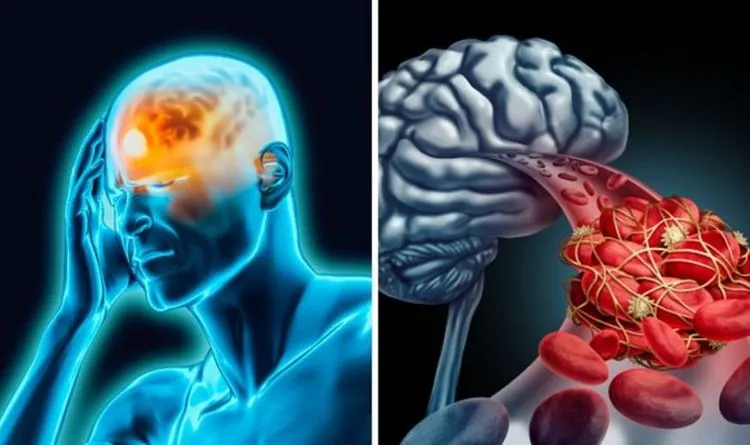Prevention is Key: Tips for Avoiding Degenerative Disc Disease
Understanding Degenerative Disc Disease: An Overview Degenerative Disc Disease (DDD) refers to the wear and tear of the spinal discs, which act as cushions between...

Dealing with brain clots can be a frightening and confusing experience. From the initial diagnosis to exploring treatment options, navigating this journey requires understanding and support. In this blog post, we'll walk you through the process step by step, offering insights and guidance along the way.
Before diving into the journey of diagnosis and treatment, it's crucial to understand what brain clots are and how they can impact your health. Brain clots, also known as cerebral embolisms or strokes, occur when blood flow to a part of the brain is blocked by a clot. This interruption in blood flow can lead to damage or death of brain cells, resulting in various symptoms such as weakness, numbness, difficulty speaking, and loss of coordination.
The journey begins with the diagnosis of brain clots, which typically involves a series of medical tests and evaluations. Your healthcare provider will perform a physical examination, review your medical history, and conduct imaging tests such as magnetic resonance imaging (MRI) or computed tomography (CT) scans to visualize the brain and identify any blockages or abnormalities. Additionally, blood tests may be conducted to assess clotting factors and rule out other underlying conditions.
Understanding the diagnosis is essential for patients and their families, as it provides clarity on the nature and severity of the condition. It's important to ask questions, seek clarification, and engage with your healthcare team to ensure you fully understand your diagnosis and the implications for your health.
Once diagnosed with brain clots, the next step is to explore treatment options tailored to your specific condition and needs. The primary goal of treatment is to restore blood flow to the affected area of the brain and prevent further damage. Treatment options may include:
Medications: Blood-thinning medications such as anticoagulants or antiplatelet drugs may be prescribed to prevent the formation of new clots and reduce the risk of recurrence. These medications work by inhibiting the clotting process and promoting blood flow through the affected blood vessels.
Thrombolytic Therapy: In some cases, thrombolytic therapy may be recommended to dissolve existing blood clots and restore blood flow to the brain. This treatment involves the administration of clot-busting drugs intravenously or directly into the affected blood vessel, usually within a few hours of symptom onset.
Mechanical Thrombectomy: For larger or more stubborn clots that do not respond to medication, a procedure called mechanical thrombectomy may be performed. This minimally invasive procedure involves inserting a catheter into the blocked blood vessel and using a device to physically remove the clot, restoring blood flow and reducing the risk of complications.
Surgery: In rare cases, surgery may be necessary to remove a blood clot or repair damaged blood vessels in the brain. Surgical interventions are typically reserved for severe or life-threatening situations where other treatments have been unsuccessful.
Your healthcare provider will work closely with you to develop a personalized treatment plan based on your specific diagnosis, medical history, and individual preferences. It's important to weigh the potential benefits and risks of each treatment option and make informed decisions in collaboration with your healthcare team.
After receiving treatment for brain clots, the road to recovery begins. Recovery can be a gradual process, and it's essential to be patient and diligent in following your healthcare provider's recommendations. Depending on the severity of your condition, you may require physical therapy, occupational therapy, speech therapy, or other rehabilitation services to regain lost skills and functions.
In addition to physical recovery, it's essential to prioritize your emotional and mental well-being during this time. Coping with a brain clot diagnosis can be emotionally challenging, and it's okay to seek support from friends, family, or mental health professionals as needed. Joining support groups or connecting with others who have experienced similar challenges can also provide valuable encouragement and guidance along the journey.
As you navigate your journey with brain clots, remember that you are not alone. Your healthcare team is here to support you every step of the way, providing expert medical care, guidance, and encouragement. By staying informed, actively participating in your treatment decisions, and maintaining a positive outlook, you can overcome obstacles and embrace a brighter future ahead.
Navigating the journey from diagnosis to treatment with brain clots can be daunting, but with knowledge, support, and perseverance, it is possible to overcome challenges and achieve positive outcomes. By understanding your diagnosis, exploring treatment options, and embracing the road to recovery, you can take control of your health and move forward with confidence and hope. Remember, your journey is unique, and your healthcare team, including the best neurosurgeon in India, is here to guide you every step of the way. With access to advanced medical technologies and expertise in blood clot brain treatment in India, you can trust that you're receiving world-class care tailored to your individual needs and circumstances.
Partager cet article